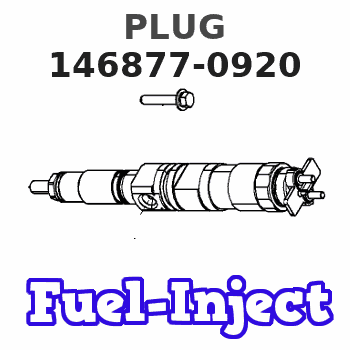Information plug
BOSCH
9 461 615 583
9461615583
ZEXEL
146877-0920
1468770920
ISUZU
8971443580
8971443580

Rating:
Include in ###:
Number on scheme 117/1


1047414940
as PLUG
L=5.1
1047417050
as PLUG
1047417201
as PLUG
L=5.1
1047417260
as PLUG
1047417330
as PLUG
L=5.1
1047417340
as PLUG
1047417400
as PLUG
L=5.1
1047417420
as PLUG
1047417430
as PLUG
L=5.1
1047427044
as PLUG
1047427113
as PLUG
L=5.1
1047427270
as PLUG
1047427272
as PLUG
L=5.1
1047427310
as PLUG
1047427381
as PLUG
L=5.1
1047427390
as PLUG
1047427391
as PLUG
L=5.1
1047427400
as PLUG
1047427401
as PLUG
L=5.1
1047427420
as PLUG
1047427421
as PLUG
L=5.1
Cross reference number
Zexel num
Bosch num
Firm num
Name
146877-0920
9 461 615 583
8971443580 ISUZU
PLUG
C 11FV CLOSING PLUG parts(VE) Others
C 11FV CLOSING PLUG parts(VE) Others
Information:
Torque for Standard Bolts, Nuts and Taperlock Studs
The following charts give general torques for bolts, nuts, and taperlock studs. For torque specifications not included in this section, refer to SENR3130, Torque Specifications, available from your Caterpillar dealer.
Torques for Bolts and Nuts With Standard Threads
Torques for Taperlock Studs
Use these standard torque values for all fasteners, unless otherwise specified in this manual or in the Service Manual.Torque for Metric Fasteners
Be very careful never to mix metric with customary (SAE standard) fasteners. Mismatched or incorrect fasteners will cause engine damage or malfunction and may even result in personal injury.Original fasteners removed from the engine should be saved for reassembly whenever possible. If new fasteners are needed, they must be of the same size and grade as the ones that are being replaced.
Material strength identification is usually shown on the bolt head by numbers (8.8, 10.9, etc.). The following chart gives general torque values for bolts and nuts. Use these standard torque values unless otherwise specified in this publication. Metric hardware must be replaced with metric hardware. Check Parts Manual for proper replacement.Torques for Bolts and Nuts with Metric Threads
Torque for Standard Hose Clamps-Worm Drive Band Type
The following chart gives the torques for initial installation of hose clamps on new hose and for reassembly or tightening of hose clamps on existing hose. Torque for Constant Torque Hose Clamps
Due to extreme temperature changes, hose will heat set. Heat setting causes hose clamps to loosen. Loose hose clamps can result in leaks. There have been reports of component failures caused by hose clamps loosening. The new constant torque hose clamp will help prevent these failures. A constant torque hose clamp can be used in place of any standard hose clamp. Make sure the constant torque hose clamp is the same size as the standard clamp.
Installation
Each installation application can be different depending on the type of hose, fitting material, and anticipated expansion or contraction of the hose and fittings. A torque wrench should be used for proper installation of constant torque hose clamps. Constant torque hose clamps should be installed as follows:* To allow for maximum expansion, install clamps at 5.7 N m (50 lb in).* To allow for equal expansion and contraction, install clamps at 10.2 N m (90 lb in).* To allow for maximum contraction, install clamps at 14.1 N m (125 lb in).
The following charts give general torques for bolts, nuts, and taperlock studs. For torque specifications not included in this section, refer to SENR3130, Torque Specifications, available from your Caterpillar dealer.
Torques for Bolts and Nuts With Standard Threads
Torques for Taperlock Studs
Use these standard torque values for all fasteners, unless otherwise specified in this manual or in the Service Manual.Torque for Metric Fasteners
Be very careful never to mix metric with customary (SAE standard) fasteners. Mismatched or incorrect fasteners will cause engine damage or malfunction and may even result in personal injury.Original fasteners removed from the engine should be saved for reassembly whenever possible. If new fasteners are needed, they must be of the same size and grade as the ones that are being replaced.
Material strength identification is usually shown on the bolt head by numbers (8.8, 10.9, etc.). The following chart gives general torque values for bolts and nuts. Use these standard torque values unless otherwise specified in this publication. Metric hardware must be replaced with metric hardware. Check Parts Manual for proper replacement.Torques for Bolts and Nuts with Metric Threads
Torque for Standard Hose Clamps-Worm Drive Band Type
The following chart gives the torques for initial installation of hose clamps on new hose and for reassembly or tightening of hose clamps on existing hose. Torque for Constant Torque Hose Clamps
Due to extreme temperature changes, hose will heat set. Heat setting causes hose clamps to loosen. Loose hose clamps can result in leaks. There have been reports of component failures caused by hose clamps loosening. The new constant torque hose clamp will help prevent these failures. A constant torque hose clamp can be used in place of any standard hose clamp. Make sure the constant torque hose clamp is the same size as the standard clamp.
Installation
Each installation application can be different depending on the type of hose, fitting material, and anticipated expansion or contraction of the hose and fittings. A torque wrench should be used for proper installation of constant torque hose clamps. Constant torque hose clamps should be installed as follows:* To allow for maximum expansion, install clamps at 5.7 N m (50 lb in).* To allow for equal expansion and contraction, install clamps at 10.2 N m (90 lb in).* To allow for maximum contraction, install clamps at 14.1 N m (125 lb in).